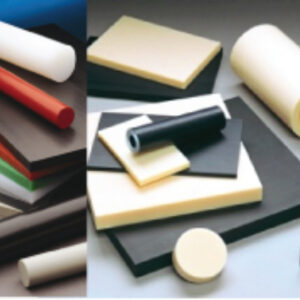Electrical grease pumps have become an essential tool for those involved in the maintenance of heavy machinery. The function of these pumps is to ensure that lubrication is delivered efficiently and accurately to specific points where it is needed. They are commonly used in industries such as mining, construction, and manufacturing, where large machines require regular lubrication to operate safely and efficiently.
The electrical grease pump operates by using an electric motor to drive a piston or diaphragm which then pushes the lubricant from a reservoir towards the designated point. These pumps are particularly useful in areas where manual application of grease can be difficult or impossible due to accessibility issues or safety concerns. In this article, we will explore the function of electrical grease pumps and their importance in modern industrial operations.
Defining the Electrical Grease Pump
An electrical grease pump is a machine that distributes lubrication in various moving parts of equipment and machinery. It is responsible for maintaining smooth operation by reducing friction between the components of the equipment. This device can be used in various industrial applications such as manufacturing, construction, mining, agriculture, and transportation.
The electric grease pump consists of a reservoir that stores the lubricant and an electric motor or air compressor that pumps out the lubricant. The system operates automatically to dispense the right amount of lubricant to all necessary parts without requiring manual intervention. This ensures consistent application and maximum efficiency.
Overall, the electrical grease pump plays a vital role in keeping heavy machinery running efficiently while minimizing wear and tear on critical components. By reducing downtime due to maintenance issues caused by inadequate lubrication, it saves time and money for businesses operating heavy-duty equipment.
Understanding the Components:
The electrical grease pump is a device that is used to lubricate machinery and equipment. The primary function of this pump is to provide a steady supply of grease to various parts of the machine that require lubrication, such as bearings, gears, and other moving parts. The pump operates by drawing in grease from a storage container and then pumping it through hoses or pipes into the machinery that needs lubrication.
One essential component of an electric grease pump is the motor, which powers the system. This motor can be either AC or DC and provides the energy required for the pump to operate. Another critical component is the reservoir or storage container where the grease is stored before being pumped into the machine. This reservoir must be appropriately sized to ensure adequate lubrication for all moving parts.
In addition, there are other crucial components like filters and pumps that work together with valves and fittings to regulate pressure and flow rate effectively. These components play a vital role in ensuring consistent performance while also extending equipment lifespan by reducing friction between moving parts. Understanding these components’ function is crucial in maintaining optimal performance levels for your machines while also minimizing downtime due to mechanical failure caused by inadequate lubrication resulting from faulty electric grease pumps.
Exploring the Parts of an Electrical Grease Pump
An electrical grease pump is a machine that dispenses lubricating grease to machinery. It works by providing a consistent flow of grease to lubrication points, thereby extending the life of the machinery. The parts of an electrical grease pump can vary depending on the model and manufacturer, but there are some standard components that most units have.
One crucial part of an electrical grease pump is the motor. This component drives the pump’s operation and ensures that it dispenses lubricant continuously. Another vital part is the reservoir or container where the lubricant is stored before being pumped out to machinery. The controller valve, which regulates the flow rate and pressure of lubricant, is another essential part.
Other components include hoses, fittings, filters, gauges, and relief valves. Hoses connect different parts of the system while fittings join them together securely. Filters remove contaminants from oil or other fluids to prevent damage to sensitive machine components. Gauges monitor pressure levels while relief valves release excess pressure in case it builds up beyond safe levels. Understanding these parts helps you choose an effective electrical grease pump for your specific needs and maintain its function effectively over time.
The Functionality:
The electrical grease pump plays a vital role in the industrial sector. It is used to lubricate machinery and equipment, providing a smooth and long-lasting performance. The functionality of the electrical grease pump lies in its ability to dispense precise amounts of grease or oil to various components of machinery at different intervals, ensuring that they remain well-lubricated and protected from wear and tear.
One of the key features of the electrical grease pump is its versatility. It can be used for a wide range of applications, including automotive, marine, aerospace, construction, manufacturing industries and more. Additionally, it offers high-pressure output which ensures that even hard-to-reach components can be lubricated easily.
Another important aspect of the functionality of an electrical grease pump is its ease-of-use. Operators can control flow rate by adjusting settings on the device itself or via remote controls. This makes it possible to achieve consistent results while also minimizing waste or overuse of lubricant materials which ultimately increases efficiency and reduces maintenance costs over time.
How Does an Electrical Grease Pump Operate?
An electrical grease pump is a device that is used to lubricate machinery and equipment. It operates by pumping grease from a container or reservoir through hoses and into the moving parts of the machinery. The purpose of the grease is to reduce friction and wear on the machinery, which can lead to longer equipment life and lower maintenance costs.
The electrical grease pump is powered by an electric motor, which drives a gear or piston pump. The motor typically runs on 110-240 volts AC or DC power, depending on the model. The pump draws grease from a reservoir or container and forces it through hoses to the lubrication points of the machine.
In addition to providing constant lubrication, some models of electrical grease pumps also include features such as programmable timers for automatic lubrication cycles, pressure relief valves for safety, and remote monitoring systems that allow operators to check the status of the system from afar. Overall, an electrical grease pump provides reliable, efficient lubrication for machinery in industrial settings.
Benefits of Using an Electrical Grease Pump:
An electrical grease pump is a device used to dispense lubricant from a grease reservoir to machinery or equipment that requires lubrication. The pump uses an electric motor to drive a piston or gear, which moves the lubricant through hoses and nozzles. This method of lubrication has several benefits over manual methods.
Firstly, using an electrical grease pump saves time and effort. It eliminates the need for manual pumping, which can be tiring and time-consuming. With an electrical pump, you can quickly dispense the required amount of lubricant in moments.
Secondly, using an electrical grease pump provides consistent lubrication. Manual methods are prone to human error, such as under-lubricating or over-lubricating machinery components. An electric pump ensures that each component receives the correct amount of grease every time.
Lastly, using an electrical grease pump promotes safety in the workplace. Manual methods require workers to reach into tight spaces with heavy equipment that could cause injury if dropped or mishandled. An electric pump removes this risk by allowing users to stand at a safe distance while dispensing the lubricant with ease and precision.
Why is it Important to Have One?
The electrical grease pump is an essential component in many industrial and mechanical applications. Its primary function is to provide a steady flow of lubricating grease to various parts of machinery, helping to reduce friction and wear. Without proper lubrication, moving parts can quickly break down, leading to costly repairs and downtime.
One of the main reasons why an electrical grease pump is so important is that it ensures consistent and accurate lubrication. Unlike manual methods, such as using a grease gun or hand-pumping, an electric pump can be programmed to deliver precisely the right amount of lubricant at regular intervals. This helps to ensure that all parts are adequately lubricated and reduces the risk of over- or under-greasing.
In summary, an electrical grease pump plays a vital role in maintaining the performance and longevity of machinery. By providing reliable and precise lubrication, it helps to prevent breakdowns, improve efficiency, and reduce maintenance costs over time.
Tips for Ensuring Optimal Performance and Longevity
An electrical grease pump is a critical component in various types of machinery that require regular lubrication. The primary role of the grease pump is to distribute lubricating oil or grease to different parts of the machine, ensuring that they remain adequately lubricated at all times. However, for an electrical grease pump to function optimally and have a long lifespan, proper maintenance practices must be observed.
One essential tip for maintaining optimal performance and longevity of an electrical grease pump is regularly checking the oil level. It is crucial always to ensure that there is enough oil in the reservoir since running the pump with insufficient lubrication can damage it over time. Secondly, it’s imperative to use quality greases and oils recommended by the manufacturer during refilling or topping up. Using low-quality oils can lead to clogging or blockage in the system, which may compromise performance and durability.
In conclusion, maintaining optimal performance and longevity of an electrical grease pump requires proper handling practices such as observing regular maintenance schedules like cleaning filters while also using high-quality oils/greases approved by manufacturers. By following these tips consistently, you can avoid costly repairs/replacements while ensuring your equipment operates efficiently at all times.
Choosing the Right Electrical Grease Pump:
An electrical grease pump is a device designed to transfer lubricants from a storage container to machinery parts. It is an essential tool for industries that rely heavily on the use of machines, such as construction, manufacturing, and automotive. The main function of an electrical grease pump is to ensure that machinery runs smoothly by providing lubrication where it’s needed.
When choosing the right electrical grease pump, several factors need to be considered. First and foremost, the type of machinery being used should be taken into account. This will help determine the amount of lubrication required and the viscosity of the grease that needs to be used. Additionally, one must consider how often they plan on using the electrical grease pump and whether they need a portable or stationary model.
Another important factor to consider when choosing an electric grease pump is its durability and reliability. A good quality electric grease pump should ideally have a sturdy body made from high-quality materials that can withstand harsh industrial environments without breaking down easily. Ultimately, selecting the right electrical grease pump will depend on your specific needs as well as budget constraints; however, investing in a reliable product can go a long way in ensuring your machinery operates efficiently for years to come.
Factors to Consider When Purchasing One
An electrical grease pump is a device that is used to pump grease into machinery. It is an essential tool for anyone who needs to lubricate their equipment regularly. However, before purchasing one, there are several factors you need to consider.
The first factor you need to consider when purchasing an electrical grease pump is its capacity. The size of the container will determine how much grease it can hold and dispense at once.
Another factor you should consider is the type of machinery you plan on using it with. Different machines require different types of lubrication, so it’s important to choose a pump that can handle the specific type your equipment needs.
Finally, you should also take into account the power source required by the pump. Some pumps require direct current (DC) power supply while others use alternating current (AC) power supply or even battery power sources. Ensure that your chosen electrical grease pump aligns with your preferred source of energy before purchase.





